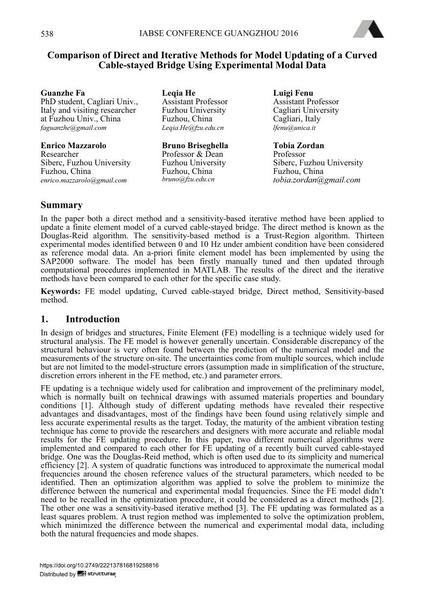Comparison of Direct and Iterative Methods for Model Updating of a Curved Cable-stayed Bridge Using Experimental Modal Data

|
|
|||||||||||
Bibliographic Details
| Author(s): |
Guanzhe Fa
Enrico Mazzarolo Leqia He Bruno Briseghella Luigi Fenu Tobia Zordan |
||||
|---|---|---|---|---|---|
| Medium: | conference paper | ||||
| Language(s): | English | ||||
| Conference: | IABSE Conference: Bridges and Structures Sustainability - Seeking Intelligent Solutions, Guangzhou, China, 8-11 May 2016 | ||||
| Published in: | IABSE Conference, Guangzhou, China, 8 – 11 May 2016 | ||||
|
|||||
| Page(s): | 538-545 | ||||
| Total no. of pages: | 8 | ||||
| Year: | 2016 | ||||
| DOI: | 10.2749/222137816819258816 | ||||
| Abstract: |
In the paper both a direct method and a sensitivity-based iterative method have been applied to update a finite element model of a curved cable-stayed bridge. The direct method is known as the Douglas-Reid algorithm. The sensitivity-based method is a Trust-Region algorithm. Thirteen experimental modes identified between 0 and 10 Hz under ambient condition have been considered as reference modal data. An a-priori finite element model has been implemented by using the SAP2000 software. The model has been firstly manually tuned and then updated through computational procedures implemented in MATLAB. The results of the direct and the iterative methods have been compared to each other for the specific case study. |
||||
| Keywords: |
curved cable-stayed bridge FE Model updating direct method Sensitivity-based method
|
||||



